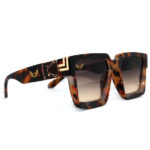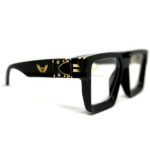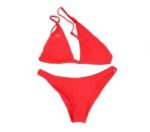8 Tips for Choosing the Best Sunglasses in 2022
Choosing the correct sunglasses takes time and lots of effort. Sunglasses are essential eyewear for reducing brightness and protecting your vision from harmful UV rays. More specifically, a high-quality pair of sunglasses will not only have you oozing confidence, but will instead equip you to face the day’s challenges with a sense of self-assurance.
Sunglasses are unquestionably trendy, but there’s more to them than that. They protect against UV radiation and assist with eye bags and dark circles under the eyes. Sunglasses are an important travel item that you should never leave home without. But, before you choose the best sunglasses for 2022, you need to be aware of a few key points. If you are looking for the in styles for this year, then check out the best sunglass styles for 2022.
1. Pick Sunglasses that will Suit your Face Shape
The issue is, how essential is a facial shape in selecting the right pair of sunglasses? It is critical to match your face shape to your favorite sunglasses. The four fundamental facial forms are square, round, oval, and heart. Finding the ideal pair of sunglasses is simple after you’ve determined your facial shape. You are choosing a pair that isn’t a good fit for your facial shape. Sometimes your favorite pair isn’t the best fit/size for you. Many people are unaware that you may get your glasses altered in-store to be properly shaped and fitted to match your face. Of course, having only one pair of glasses is a major error. A new pair of glasses may completely change your look from an everyday look.
Choose frames with gently rounded corners for square-faced persons to balance out your facial features. For square-faced people, purchase frames that are high enough on the face to soften the sharpness of the jawline. For those with round faces, Choose frames with straight or angular lines. As long as the frames are no broader than the widest region of the face, the oval-shaped face may wear nearly any frame design. In order to reduce the length, frames should cover as much of the middle of the face as feasible. Narrow frames should be avoided since they make a face look longer.
2. Protection Against Ultraviolet Rays
The ideal choice is to wear sunglasses that can block either 100 percent or 99 percent of UV rays. Because both UVA and UVB radiation can cause eye damage, choosing a pair that blocks both types of radiation is important. Sunglasses labeled ‘UV400’ shield the wearer from both UVA and UVF radiation. Choosing such a pair will not only protect eye health but will also reduce the danger of premature aging of the more delicate skin surrounding the eye.
Many sunglasses now include UV protection within the lens rather than coating it over, and the majority of reputable manufacturers specify UV protection on their labeling. Look for labels that say “100% safety both against UVA and UVB” or “100% coverage against UV 400.” Another Important thing Is to remember to change your glasses every 2-3 years. Considering sunglasses lose UV protection when they are worn in the sun, the answer to the question “how often should you change your sunglasses” is dependent on how frequently you wear them. If you use your sunglasses for more than two hours every day, you should replace them every two years.
3. Polarized Lenses for Clear View
Only polarized glasses should be considered by customers. These lenses not only darken the background but also reduce glare from surfaces such as snow, grass, and water. Polarized glasses are significantly better than regular tinted lenses for driving and engaging in a range of activities since they provide the wearer with a sharper picture of their surroundings. Polarized lenses are intended to decrease glare reflected off reflecting objects such as the ocean or roads. UV protection is not provided by polarization. Instead, it improves the visual experience of specific activities such as diving, sailing, and golfing. There are UV-blocking polarized lenses available. Check the label of your polarized sunglasses to ensure that they offer optimum UV protection.

Figure 1 Source: UV400 Royalty Shades
4. Lens Quality Check
Lenses improve your eyesight while also protecting your eyes in a variety of ways. Consider wearing glasses if you require vision correction. Both glasses and contacts may be used to correct and improve eyesight, but glasses combine attractive frames with practical lenses. Your lenses are more powerful than you realize. Follow these procedures to ensure that the lenses are correctly made:
- Consider anything having a rectangular design, such as a tiled floor.
- Hold the glasses at a suitable distance from your face and cover one eye with them.
- Looking through the lenses, carefully move the glasses from side to side
- The lenses are good if the rectangular lines remain straight
While polarized lenses are unquestionably the best for providing maximum sun glare protection, some customers prefer colored lenses. Lenses are tinted with the intention of absorbing passing light. The tint’s hue is a matter of personal taste; however, particular colors do provide a lot of benefits.
5. Pick the Right Size
To get the maximum effect from the sunglasses, consider the size of the sunglasses. Large sunglasses will not suit you if your head is tiny, and vice versa. Just as it is very important to pick glasses that suit your face shape, it is essential to purchasing the right size of sunglasses. Sunglasses with the biggest lenses possible should be used to protect your eyes from sun damage. To prevent UV rays from penetrating the sides of the glasses, consider purchasing larger or wraparound-style sunglasses.
6. Color Glasses Don’t Help with UV Radiation.
Sunglasses with colored lenses do not provide any additional protection from the sun. A brown lens, on the other hand, might give more contrast. Mirror finishes are tiny layers of metallic coatings applied to the lens of a standard sunglass. Although they reduce the amount of visible light entering your eyes, you should never think they will completely shield you from UV rays. Again, while particularly dark-colored lenses may appear cool, they do not always filter more UV radiation. But they do provide additional benefits, as mentioned earlier. Here are some colors with their unique properties to keep in mind before buying any colored sunglasses.
Gray glasses do not change or distort color, but they do diminish brightness. Brown lenses will produce some color distortion; nevertheless, they will reduce sun glare, particularly blue frequency sunlight glare, to some extent. Yellow tinted glasses give stronger glare protection against blue light than brown lenses, providing the wearer a clear and sharp view of pictures, although the color is distorted to a greater extent. Green-tinted lenses will allow the user to distinguish between things. Furthermore, they decrease part of the glare caused by blue light. Rose-colored lenses are definitely worth considering for those who indulge in water sports or other outdoor activities with a blue or green backdrop since it provides high object contrast within such backdrops.
7. All- Year Round
It is often perceived that you only need to protect your eyes from harmful UV radiation during the summer. This is not correct. You must shield your eyes from the sun, whether it is summer or winter. Sunglasses are just as important in the winter as they are in the summer. Although the sun is less bothersome in the winter than it is in the summer, the glasses must be worn all year. They protect the ocular surface from direct solar damage while also filtering out the part of the light that causes major damage.
8. Pick a Stylish Sunglasses but in Pairs of Two
High-quality sunglasses may endure for many years and even longer if you pick classic models, so keep your case at home and, if you go to the beach, be cautious of the sand. Sunglasses do not have to be costly to be effective and safe. Large frames are the latest eyewear trend statement. It might be argued that the original and first design of sunglasses is making a comeback. However, because big frames can place extra strain on the bridge of the nose, some people may experience discomfort. As we know that two is better than one. You can lose your glasses at any time, or you may just wish to wear a different pair, so if you already have one pair of glasses that checks all the boxes and want another pair, do not hesitate to get it.


